Images of American Fascism
Federal agents as militias. Home Depot parking lots as killing fields. The People's House demolished. These photos defy sanitized language and show us what American fascism looks like.
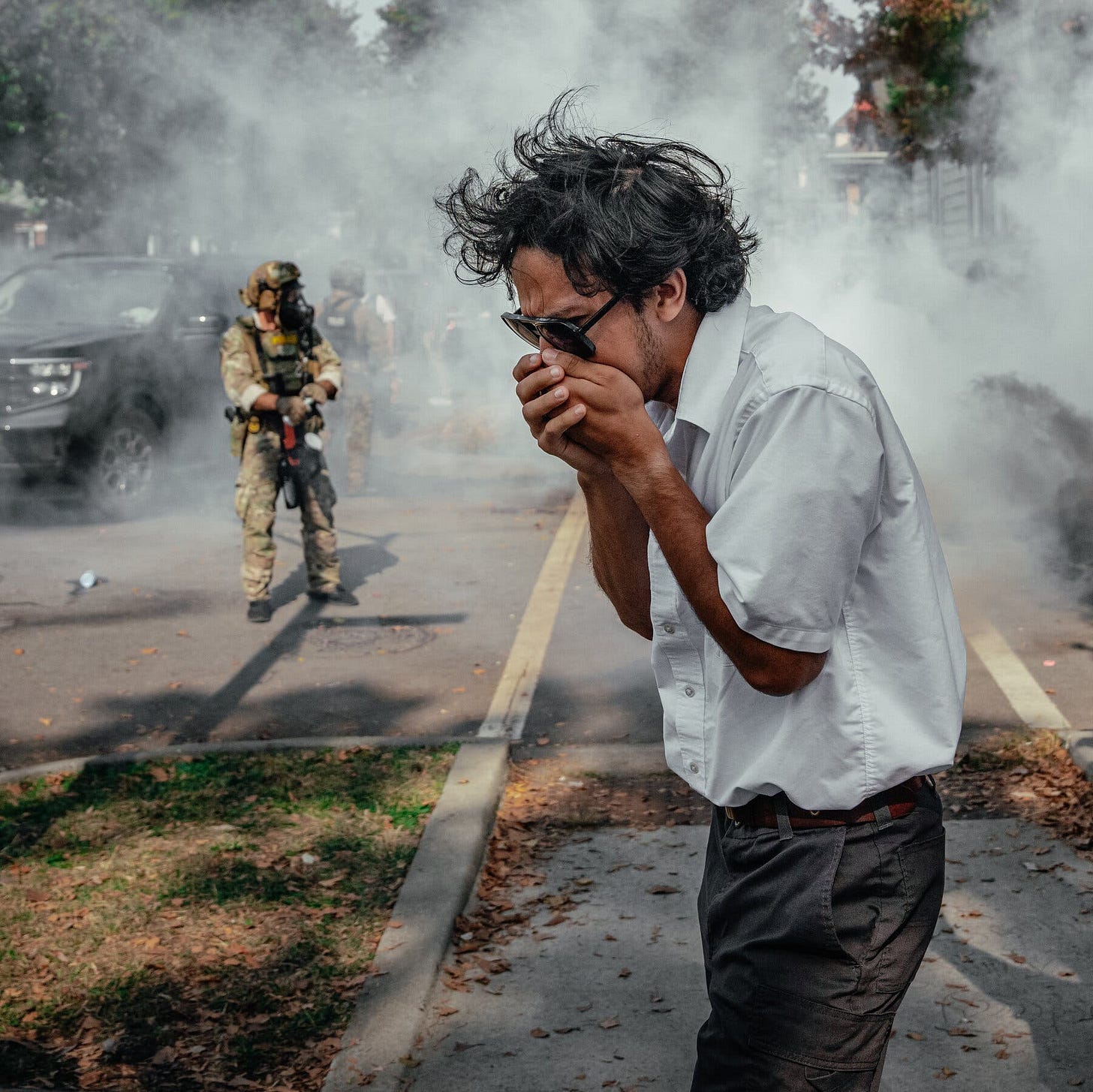
The media calls it “immigration enforcement.” They describe “federal presence” in American cities. They report on White House “renovations.” This is the language of normalization—tepid, bureaucratic, designed to obscure what we’re actually witnessing: an occupation of select American cities by extrajudicial militias, domestic terrorism directed from the Oval Office, and the literal demolition of democratic institutions.
The following images refuse that sanitized language. They document what’s actually happening by showing us what it *looks like*—the visual signatures of fascism we’ve seen before in other places, other eras. These photographs activate our historical memory. They force recognition. Home Depot parking lots become killing grounds. A wrecking ball tears apart the People’s House via executive fiat. These images expose the truth that language fails.
Act I: The Occupation
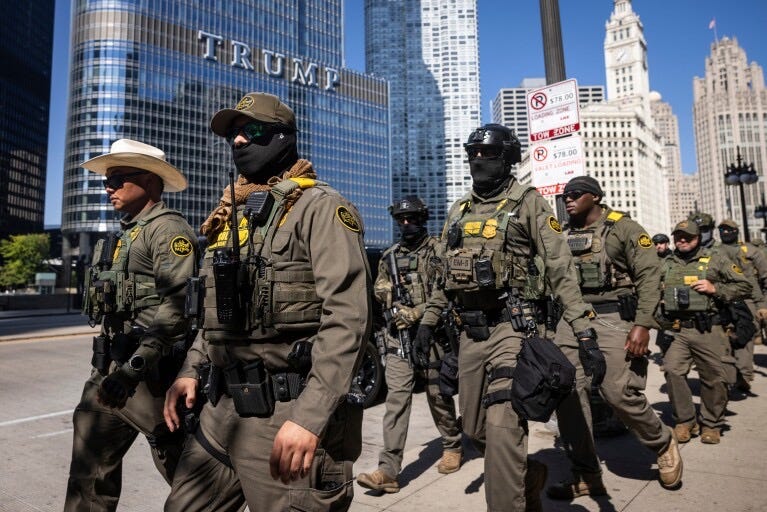
Perfect angle.
Photographer Ashlee Rezin lined up the marching federal agents with Chicago’s Trump Tower looming behind them—the gilded monument to one man’s ego now serving as the backdrop for his commandos moving through American streets. The composition makes the connection explicit: these aren’t law enforcement officers serving the public; they’re his forces, deployed to terrorize hand-picked cities into submission.
The agents move with the ragtag quality of a militia—mismatched headgear, irregular formation, but unified in purpose. The street-level perspective puts us in the position of the occupiers, watching them approach. We’ve seen this visual grammar before as paramilitaries barrel through urban corridors.
It’s not the first time Chicago has seen federal forces in its streets. But this time, there’s no convention to disperse. This is occupation as policy.
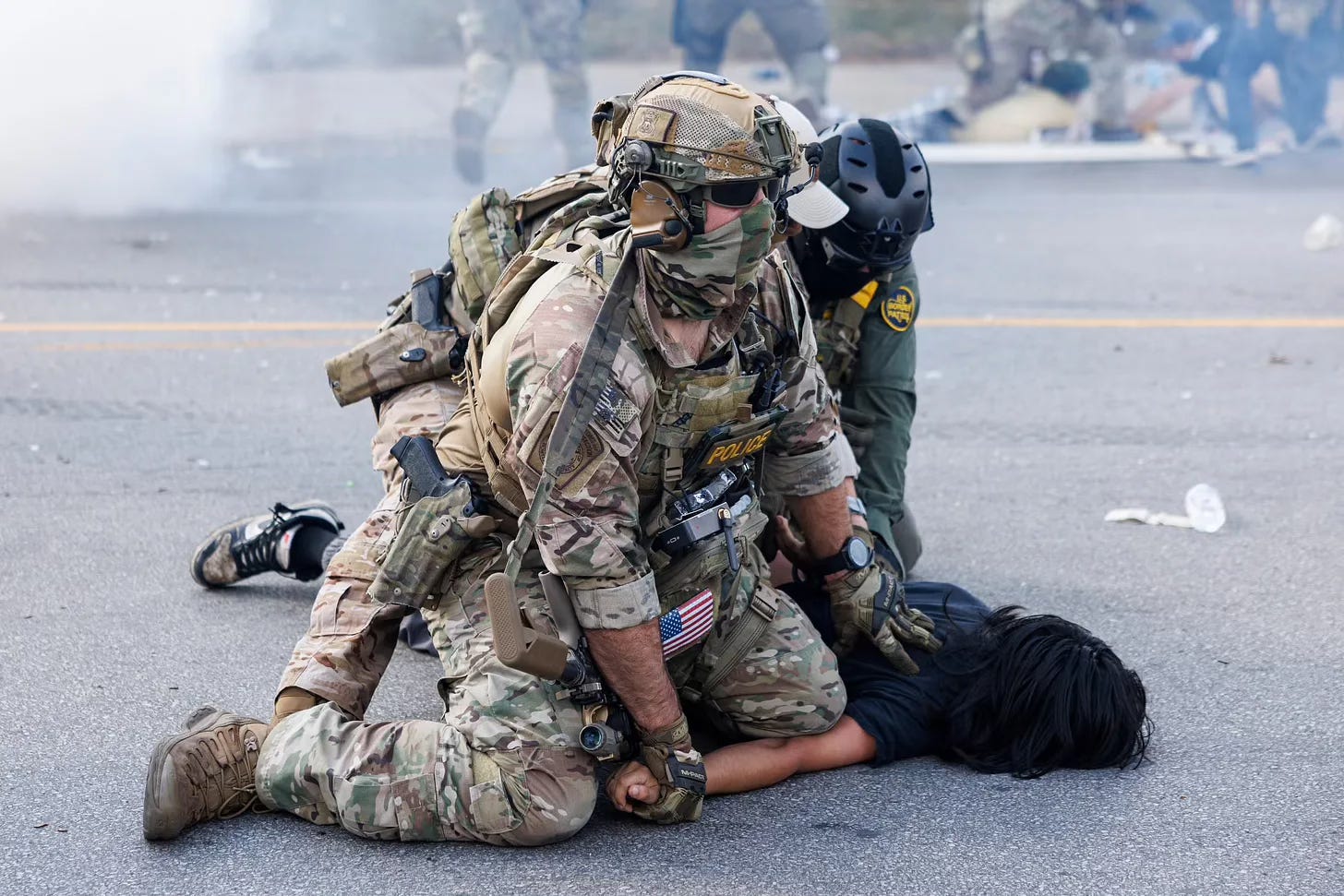
Body pinned to pavement, uniforms looming over, tear gas hanging in the air—this photo circulated widely because it crystallizes the pattern. Trump deploys force sporadically and unpredictably, which is key to the terror. But this image captures the whole repressive stance in a single frame.
There’s a reason the photo grabbed me the way John Filo’s Kent State massacre photo did. That image stood for everyone who was assaulted and killed during the Vietnam War protests. This one works the same way: every protester pinned an iteration, each waft of spray a token of Tear Gas Nation.
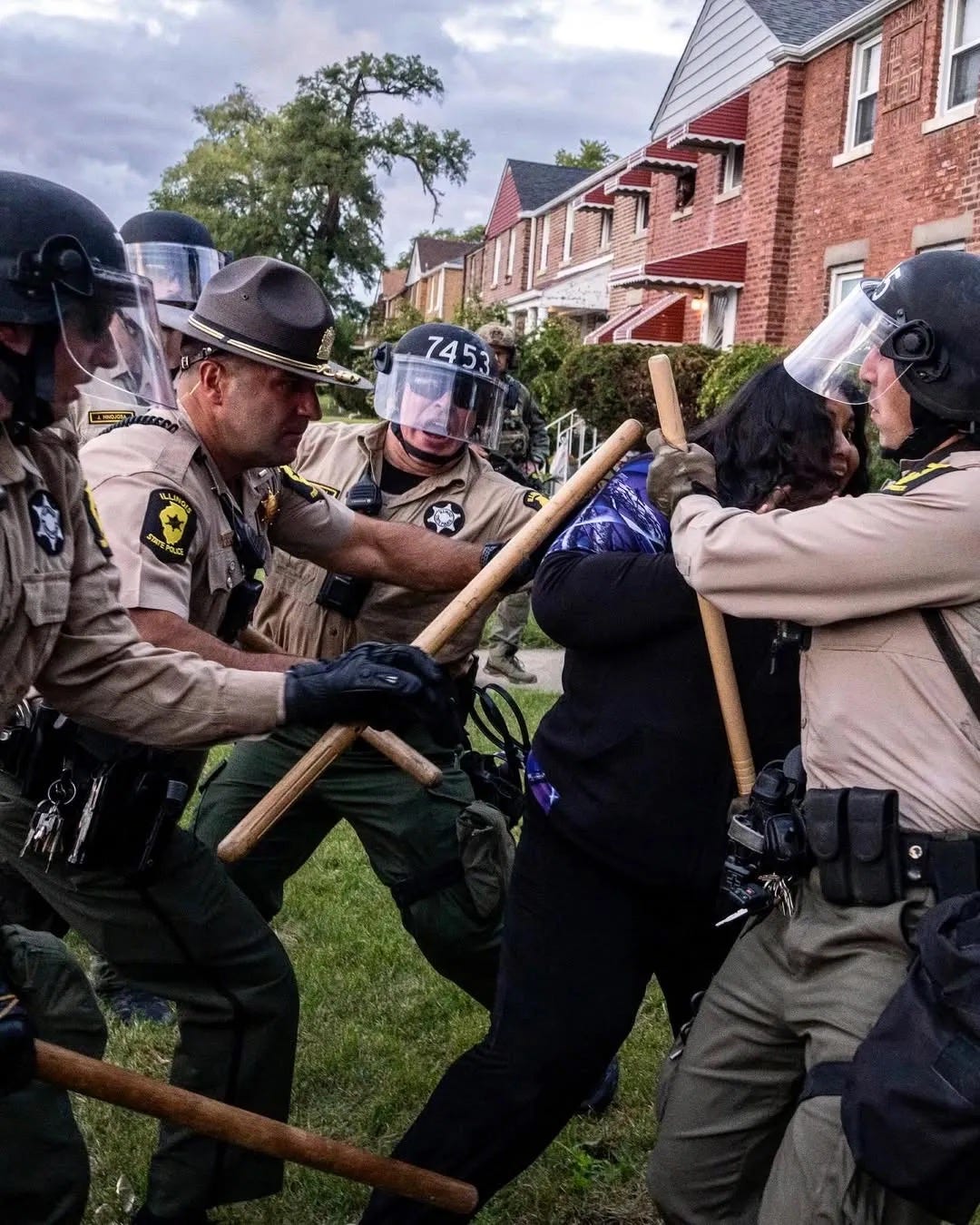
For decades, the processing center sat tucked in an industrial park in Broadview—most residents didn’t even know it existed until Trump repurposed it as ICE’s “primary processing location” for his enforcement surge. This suburb of 8,000 people now has state police, county sheriffs, and federal agents enforcing curfews, deploying tear gas and rubber bullets—”making war on my community,” as the mayor put it.
The nightsticks form their own architecture—echoing the peaked roofs behind them, creating a window frame of batons that traps the woman protester, screaming off-center. The symbolism is literally torturous: law enforcement tearing apart the very geometry of civil protection, the devil’s triangle swallowing up democratic space.

Roberto Carlos Montoya Valdez came to a Home Depot parking lot looking for work, just as ICE came hunting. His makeshift memorial marks the spot where he stood that morning—flowers and crosses gathered where day laborers meet at dawn. This is America’s latest war memorial: big-box home improvement stores transformed into killing fields—our Immigrant Arlington.
On the Home Depot asphalt, America’s tacit imported labor collides head-on with Trump’s vicious jingoism. The ubiquitous logo looms over candles and crosses—corporate and indifferent. The brand now equates with their grief. Hard hats and safety vests, meant for building, become icons of loss. The store remains open. The work continues. So we memorialize at raid sites now.
Act II: The Normalization
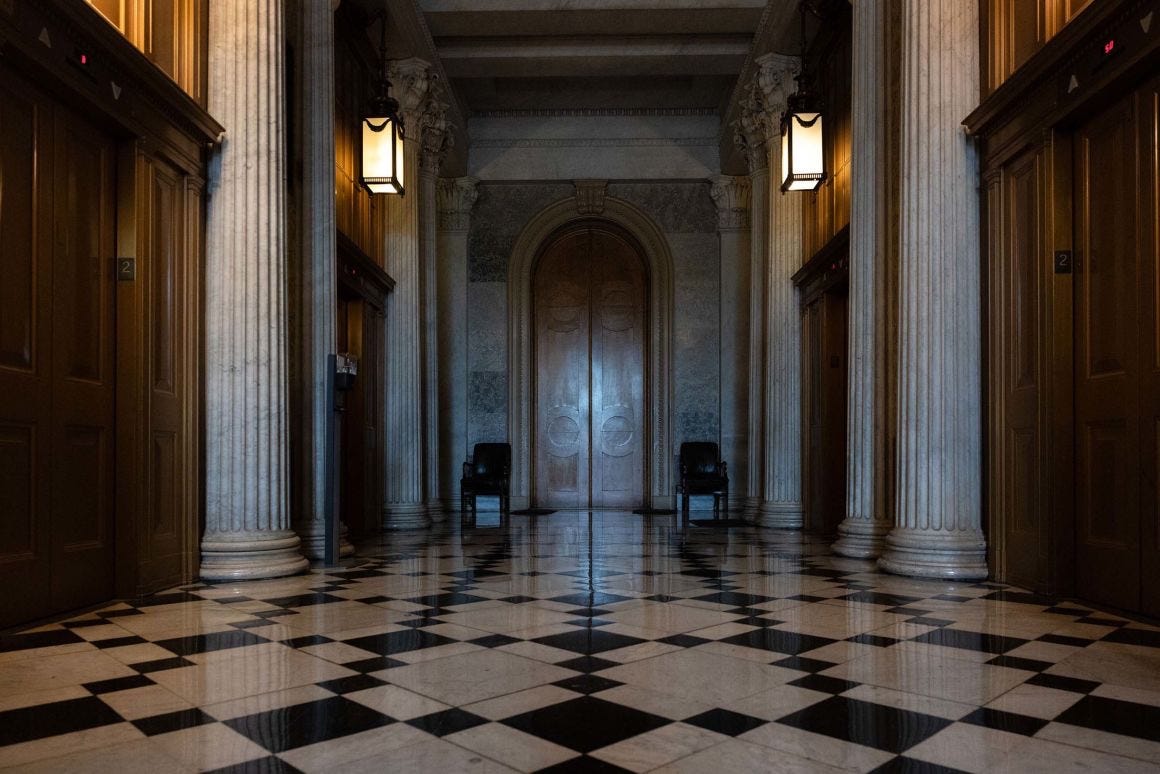
Capitol photographers live for the frenzy—members rushing to votes, staff zipping down corridors, the constant pulse of governance. This image captures the opposite: abandonment, stillness, democracy made inoperative. The government shut down on October 1 after Trump and congressional allies refused to negotiate a funding deal.
DOGE wasn’t just a meme—it was the blueprint.
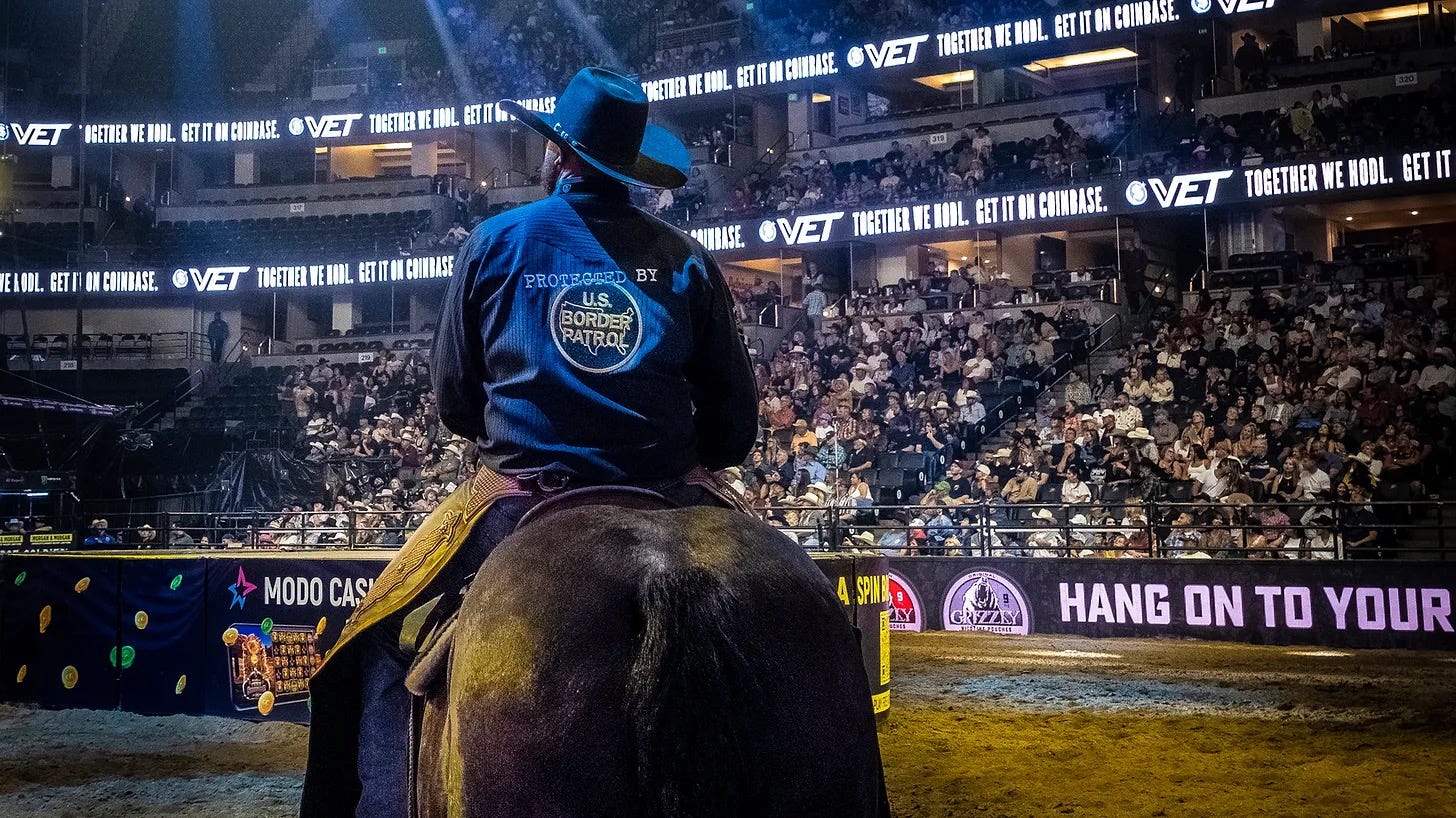
Four years ago, Paul Ratje’s photograph of Border Patrol agents on horseback chasing Haitian migrants through the Rio Grande sparked national outrage. The image was everywhere—agents wielding reins like whips, migrants ducking in terror.
The evolution involves a $15 million sponsorship deal that turns the Border Patrol into an entertainment brand. Pickup men wear Border Patrol chaps. Riders wear “Protected by Border Patrol” jerseys. Agents rappel from arena rafters to standing ovations. Competitors go on “ride-alongs” with agents, participate in apprehending migrants, and post Instagram videos bragging about it. One said chasing immigrants was a greater adrenaline rush than riding a bull.
As immigration enforcement morphs into family entertainment, fascism takes a bow.
Act III: The Demolition

When I saw the gutted facade eclipsing Old Glory in the East Wing demolition photos, 9/11 came to mind. Both images arrest us with their flags and ruptured architecture— the visual similarity only sharpening the difference.
The Pentagon burned from an attack the country had no choice but to endure. Its scar became a national cause—a promise to resist and rebuild. Now, as the White House is gutted by executive order—with no congressional approval, no heed for preservationists, all for a private ballroom—we’re told it’s just “renovation.” Both images reveal iconic American institutions torn apart, each arrayed with flags bearing silent witness. But the Pentagon image memorializes what was done to us; the White House documents what Trump is doing to us. That’s not metaphor—it’s the stark distinction between terrorism and fascism.
Alex Kent’s photograph drives that reality home in more impressionistic terms. The flag hangs close to twisted metal, enlarged but obscured, backgrounded by darkness and debris. Smoke drifts through—from demolition or something more ominous, it’s unclear. There’s a second flag in the distance, smaller, receding through haze. One version of America endures but grows harder to visualize.
The People’s House is a war zone.
Chatting the Pictures: Trump Must Be High
President Trump on the White House roof with a private architect, surveying plans for his $200 million ballroom project. White House photo by Molly Riley. Chatting the Pictures features writer and photo historian Cara Finnegan, RTP Publisher Michael Shaw, and is produced by Liliana Michelena.
Before the wrecking ball came the gloating. Trump on the White House roof in August, private architect at his side, literally standing above the Press Briefing Room where reporters shouted questions from the ground below. Developer inspecting property. Strongman surveying domain. One man literally on top of American democracy.
This is the visual thesis made flesh: not a president governing, but an autocrat claiming ownership. The $200 million ballroom project—90,000 square feet that would replace the entire East Wing—isn’t renovation, it’s annexation. And Trump wants you to see him doing it, wants the photographs of him towering over the institutions, the press, the people. His brand of fascism doesn’t hide; it peacocks.
Watch our full analysis of this image and what it reveals about Trump’s relationship to power, the press, and the People’s House.
Thank you for visiting Reading the Pictures. Despite our visually saturated culture, we remain one of the few sources for analyzing news photography and media images. This post is public, so feel free to share it.
To receive new posts and support our work, consider becoming a free or paid subscriber. As a non-profit organization, your subscription is tax-deductible.



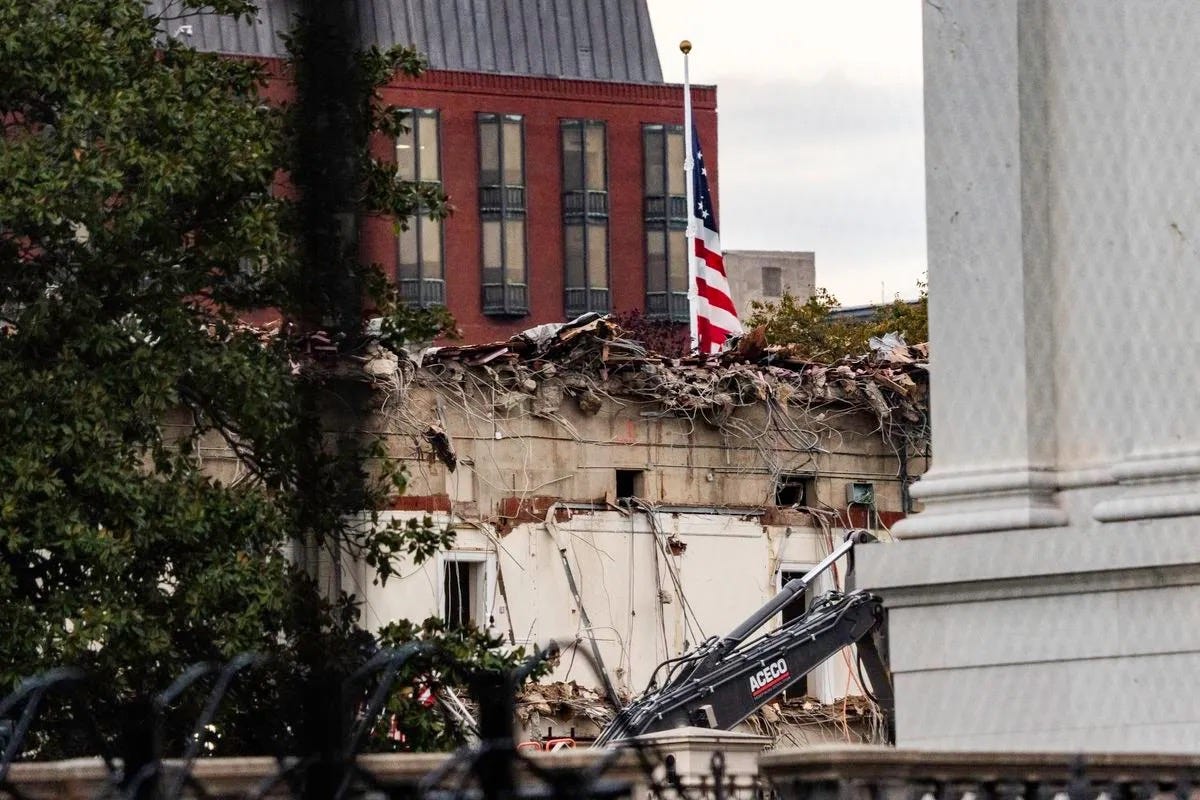
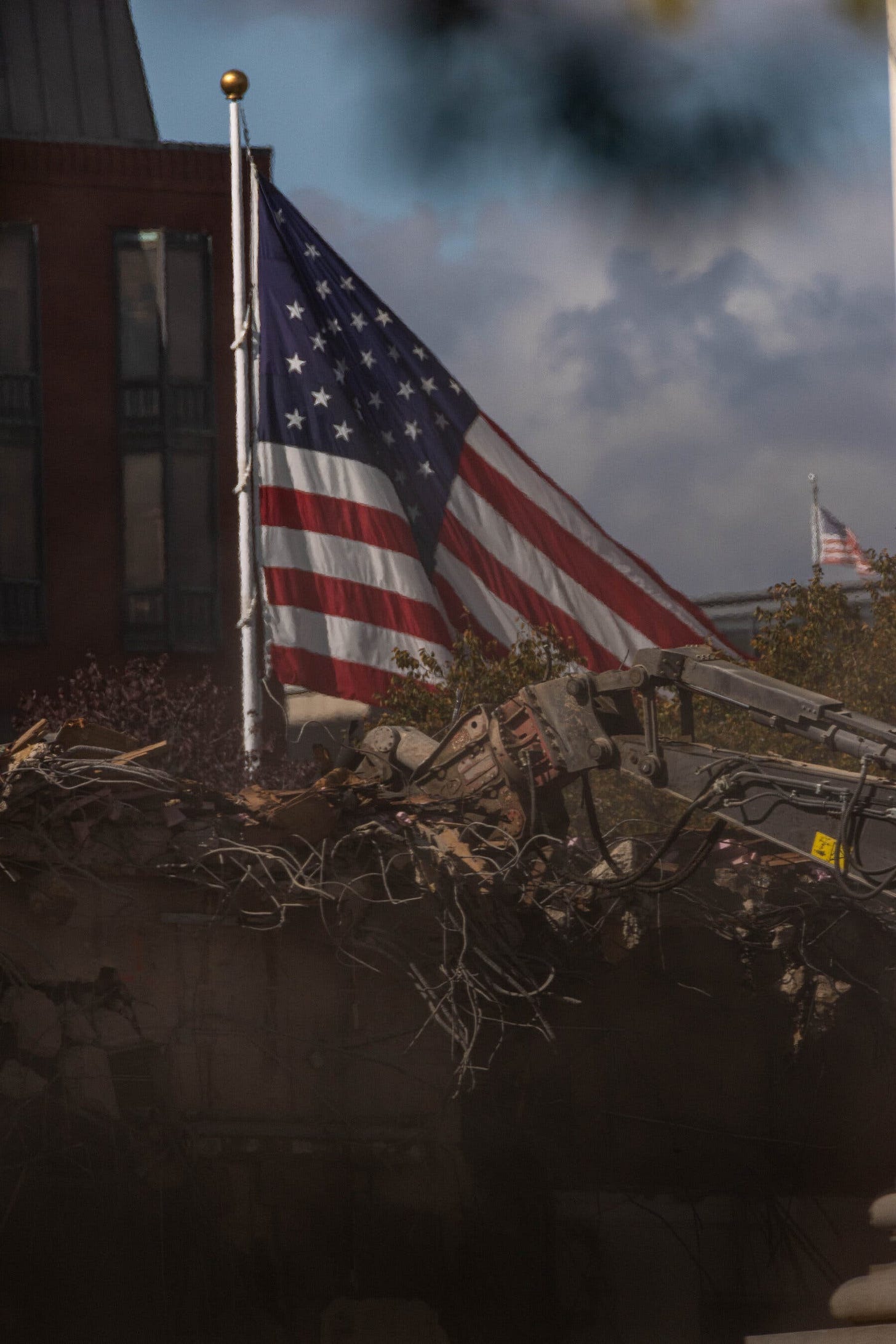
Wow!